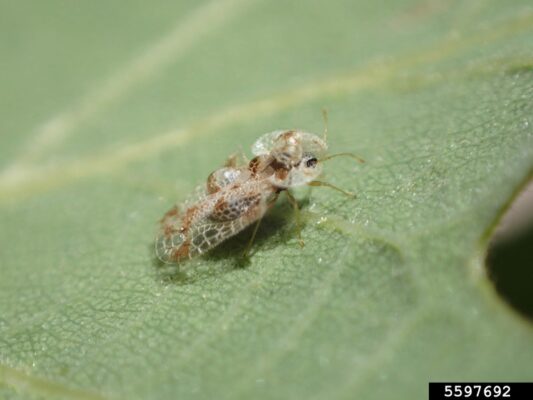Lace Bugs Include Dozens Of Species In The United States
In the United States, there are over 165 species of lace bugs. In Missouri, the most common include the sycamore lace bug, azalea lace bug, and many others named after their host tree:

- Cherry
- Oak
- Elm
- Hawthorn
This species gets its name from its lace-like appearance on the forewings and body, which is small, flattened, and often rectangular. Females lay their eggs on the underside of leaves, and a brown substance covers them to secure them.
Signs And Symptoms Of Lace Bugs
If the lace bug population in your trees grows, the leaves of the tree can turn yellow and drop. Much like aphids and other sucking pests, lace bugs feeds on plant juices via the leaves. The presence of spiny, dark-colored nymphs and dark-brown spots and stains on the underside of leaves is also a sign of their presence.
Managing Lace Bugs
Maintaining the health of your trees is the best way to combat these pests. The damage they may cause to your trees or shrubs may warrant intervention. Still, pest management solutions include preventative systemic treatments and/or spraying the leaves to target those that are actively feeding.
Having an ISA Certified Arborist apply horticultural oils to target lace bugs while they are dormant in the winter is an effective preventative management tool.
Ready To Nip Pests & Disease In The Bud?
Contact Hansen’s Today To Schedule Your Hassle-Free Estimate!
